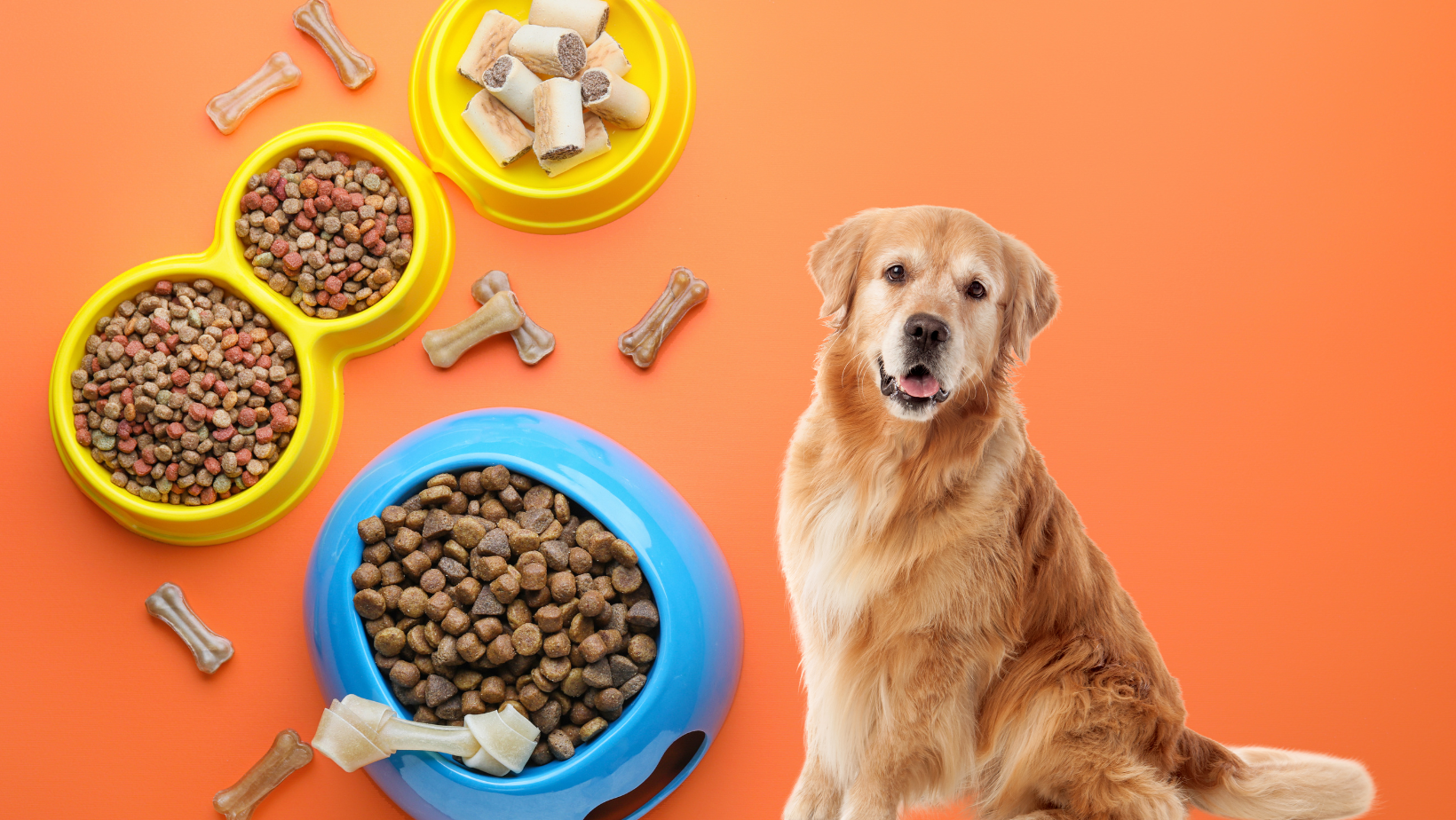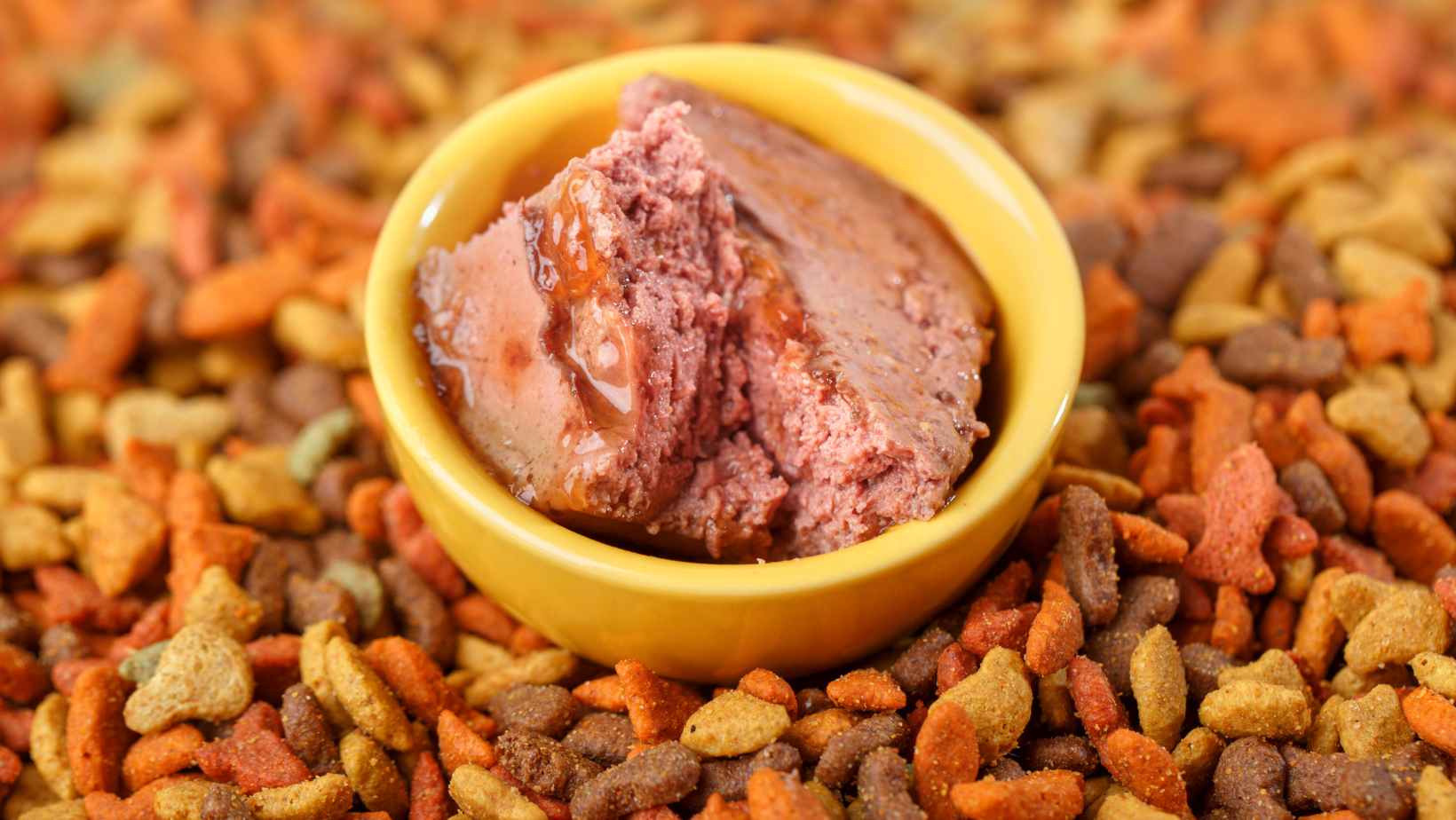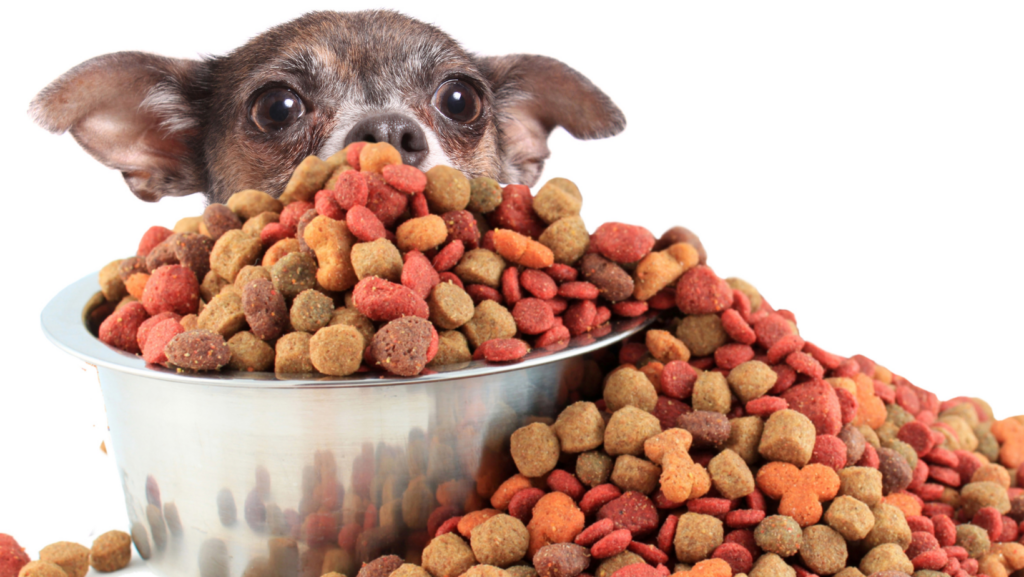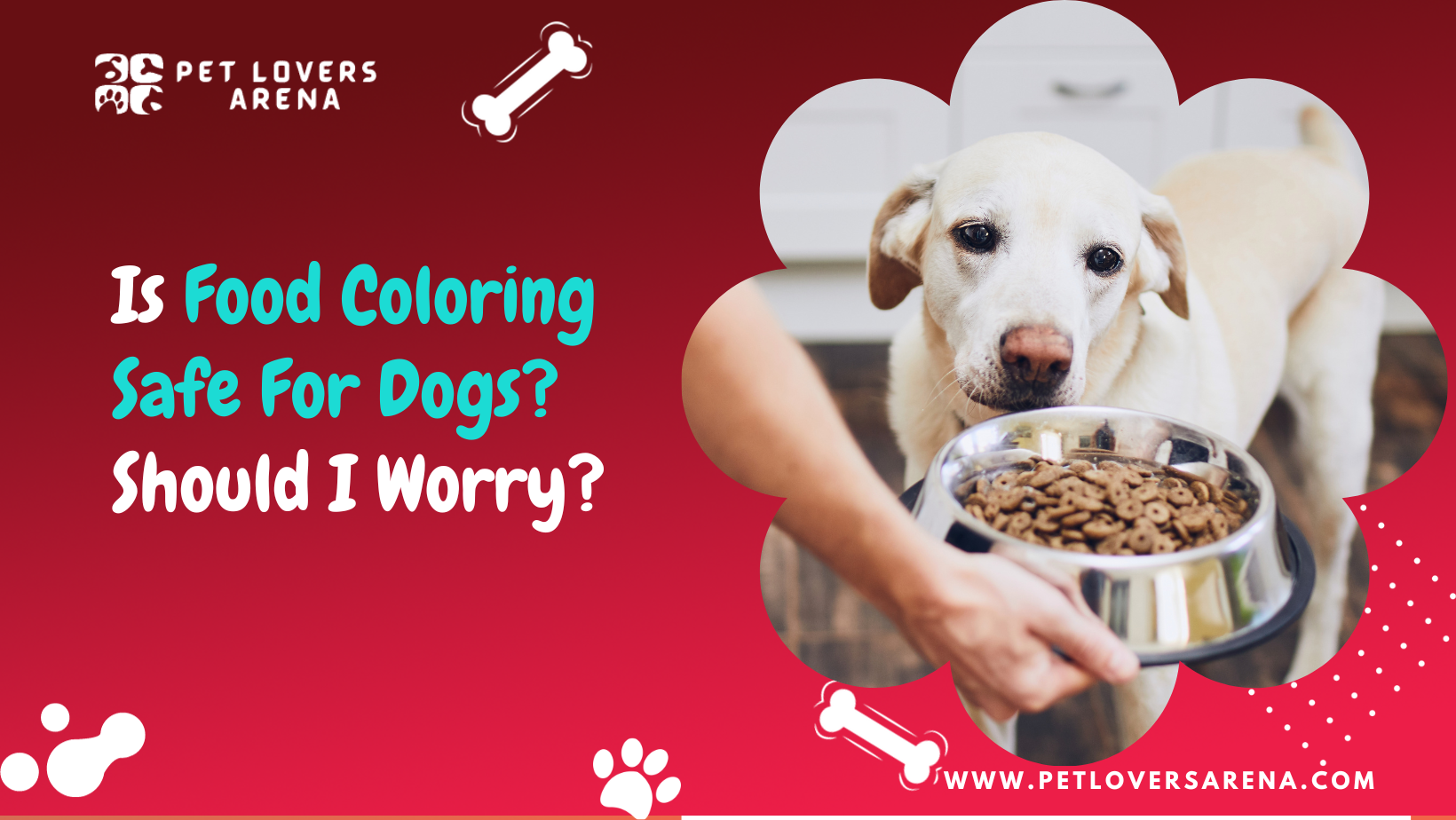According to beliefs, different colors of food attract dogs, and they love to run and eat it. Dog cookies, dog food, or such food of different colors tend to attract the dogs, and they love to eat and relish such foods. So to say that pet food contains a rainbow of colorlessness will neither be surprising nor accidental.
You may feel enlightened to see fresh vegetables’ green color, raw beef’s red, and chicken’s golden yellow color in dogs’ food. However, whenever you open a packet of dog food, you will notice all those colors that the food usually loses due to its different processes during manufacturing.
These colors that sound attractive to dog owners usually contain food coloring agents, which is not a lie. But, will it be harmful to the dog? Is food coloring safe for dogs? Should the owner be worried and so on?
Read the article to find out more about all this information about food coloring and its safety for your dog.
What is the Truth Related to Food Coloring and Dogs?

It’s alright to give food coloring to your dog, but in small amounts or moderation, say as a frothing cookie sometimes. Several reports have also been released that suggest that ingestion of the food coloring is the cause of brain tumors and thyroid tumors in dogs. However, there are still conflicting views about what harm artificial coloring causes dogs.
If you want to use food coloring in your dog’s food, make sure you use natural food coloring. Natural food coloring includes food coloring agents made from natural substances like turmeric, beetroot, etc., instead of some artificial coloring agents that prove harmful to your dog. By using natural food coloring agents, you can be sure that there is nothing bad that your puppy is eating, so it is safe.
Dogs’ Food and Coloring Agents: A Historical Background

In the 1880s, food vendors found a way to make their food look more appetizing by using food coloring. But with time, this usage of food coloring to make food appealing and delicious changed to make the food look fresher and hide the badly spoiled food.
Also, some food coloring agents include mercury, zinc, lead, and other harmful chemicals that cause more trouble to a human’s or dog’s body than spoilage of the spoiled food will do.
The Food and Drugs Act of 1906 banned the usage of toxic food coloring in food as it caused a lot of problems and caused a lot of harm. The remaining products that were not banned ensure that the coloring is from the coal tar.
In the 1990s, several kids got ill after eating orange-colored treats. The red and orange-colored candies that made kids ill were due to the side effects of the coal tar that was used to make these things as coloring agents. After the proper investigation, food coloring with coal tar was also banned.
For safety from artificial colors used in the food of dogs, an act, Color Additives Amendments of 1960, was passed to ensure the good quality of food coloring to be used for both human and dog or pet consumption.
Does The FDA Keep Tab on Food and Coloring Agents in Food?
The Food and Drug Administration controls all the color additives used in human and animal foods of all kinds. All the color additives have to be listed by the FDA and fall under two categories: the ones that need to be certified by the FDA and those that don’t need to be certified.
Certified colors are manufactured and include less than ten colors in all. And the colors that are not under certification by the FDA are made from natural substances and not artificial colors.
The Food and Drugs Administration has made certain rules for using food coloring in food. Like the rules for what are the goods that can make use of the food coloring, the amount of food coloring you use, etc. It also directs the food manufacturing companies to mention the food coloring used in the products. Despite so many rules, the FDA still keeps a tab on the food coloring agents and foods yet.
Purina and other dog food manufacturers use food coloring in their products, but the Food and Drug Administration has approved it before they use food coloring. The FDA has also checked the food dyes in pet foods and termed many of them safe.
The use of the Red Dye 40 coloring agent has been in the news for many years recently. First, it was due to the news that says these dyes cause problems in children with ADHD. This news made the owners wonder whether the same was true for their dog fur babies or not, but later on, the FDA proved the reasons to be wrong.
The Center For Science in the Public Interest (CSPI) Views on Food Coloring
The Center for Science in the Public Interest (CSPI) recently published a report stating that “Blue 2 cannot be considered safe given the statistically significant incidence of tumors, particularly brain gliomas, in male rats. It should not be used in foods.”
The CSPI also found a similar result for the Red 40 and Yellow 5 in rats. Therefore, if the above-mentioned reports trouble you and the dog’s health, you can opt for natural food colorings instead of artificial ones.
Also Read: 7 Reason Why My Dog Acts Like He Sees Something
Can Food Coloring or Color Additives Be Dangerous for Your Dog?
Yes. Many reports by CSPI have concluded that food coloring has been the cause of cancer and other bad allergies in children.
While much other research and reports have shown that if food coloring is used in the food for dogs and humans in large amounts, it can lead to cancer in patients. It will benefit humans and animals if the FDA-approved colors are used properly per the proper directions only.
Food coloring causing allergies in cats, dogs, or even humans has not been found in many cases, or you can say it has not been found yet. Unfortunately, this situation leads the research or articles related to articles to be inconclusive.
Still, when we discuss whether food coloring is safe for dogs and cats, we consider the studies there to find the effect food coloring has on dogs, cats, and other pets.
The Use of Artificial Dyes in Dog Food

Many dog food products make use of coloring agents to make them look attractive to dogs. These agents can be artificial or organic, but there is a necessity for their usage in some cases to make the food attractive for dogs.
Many duties and conflicts have arisen that raise issues about whether these food colors are safe for dogs or not. To avoid any health issues in your dog, use natural food coloring agents or brands that use natural food coloring agents.
You can find such brands in dog food stores that use natural food coloring agents, but sometimes it can be tough. For that, you can search online for food containing natural coloring agents. It can be not only convenient but online, and you can find a variety of trustworthy brands.
Natural foods with natural food coloring agents are best for your dog. The food that contains artificial food coloring is usually processed food, and such food is not healthy for dogs. Instead of using such foods, you should use healthy foods for your dog.
Bonus Read: Is Hobby Lobby Pet Friendly? Complete Information On Pet Rules Of Hobby Lobby
Is it Food Coloring for Dying the Dog’s Coat Hairs?
Yes. Whether it is safe for your dog to consume the food coloring or not, it is safe for you to color your dog’s coat with the food coloring agent.
It is not safe for you to use human dye on your dog’s coat, and it includes all those dyes that are even considered safe for sensitive scalp. So, using human dye on your dog’s skin coat is a big no!
Whenever you shop for natural food coloring agents or dye in your search for food, you can look for ingredients like vegetables, flowers, herbs, fruits, etc.
There are a lot of food colors like orange, red, yellow, etc. that are safe for use in dogs. Unfortunately, many dog owners who tried using artificial food coloring agents ended up causing an allergic reaction to their dogs’ skin.
As it is better to be safe, make sure you use natural food coloring for your dog and use less artificial food coloring.
The Switch From Artificial to Natural
The Nielsen Global Survey’s latest survey has proved that many people don’t prefer having artificial food coloring in their food; they only prefer to use natural food coloring. This shift from artificial to natural food coloring has led many big global brands to change their approach to food coloring and find some natural alternatives to artificial ones.
Being a pet owner, it’s always the first concern to give the pets something healthy that doesn’t spoil their health. If you are concerned about food coloring as a pet owner, you can rest assured that if you use FDA-certified food coloring products, no problems have arisen thus far. But always, pet owners look for food that excludes the word “artificial” and is only made up of natural ingredients.
Colors for dogs are being broken down.
Don’t think that dogs are happy when they see food in various colors. The color of the food hardly affects the dog. What matters is the happiness with which the human gives the food to the dog.
It will be hard for you to believe that the dogs have dichromatic vision, meaning they can mainly discern between blue and yellow.
So instead of giving your dog food in various colors, give him food with enthusiasm and love. Also, ensure that the food you feed your dog is extremely healthy and does not contain any artificial preservatives or food coloring agents.
The best thing is to give your dog as much natural food as you can to make your dog healthy and avoid any problems.
Also Read: 8 Dog Food Brands To Avoid [+ 5 You Should Buy]
Conclusion
Using artificial food coloring for your dog’s food is not what experts prefer. Many researchers have proved artificial food coloring to be very harmful to dogs, causing cancer and allergies. Be careful whenever you go for a colored fold for your dog; ensure it is safe.
Thus, you should use dog food containing natural coloring and natural agents. Always prefer natural coloring agents and natural food for your dog over anything else. Also, the gesture you give your dog is more important than the color, as the dog is only dichromatic.
Meet Madison Phillips, your compassionate guide to pet well-being. With experience from VCA Animal Hospitals and Laxton Vet Clinics Bellaire Inc. Madison honed her skills and embraced the balance of medical expertise and compassion, through her articles, she simplifies pet care, whether you’re a newbie or an experienced pet parent.

